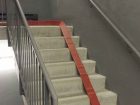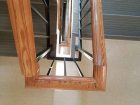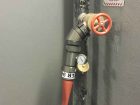
Features
Training
Back to Basics: August 2016
Most mid-rise or high-rise buildings are equipped with standpipe systems that allow firefighters to access water. Fire crews need to consider many elements with respect to securing a standpipe system, such as the size of hoselines, types of nozzles, tools or equipment to bring, the number of firefighters needed, where to stage all of the equipment, and whether or not to use the elevator.
July 14, 2016
By
Mark van
The question of whether firefighters should hit the standpipe on the fire floor or one floor below is the subject of intense debate among many firefighters and fire departments. The answer to that question determines a crew’s method of attack with respect to standpipe operations, from the initial attack to subsequent operations.
I can’t speak for all proponents of using the standpipe on the fire floor, but common reasons crews use this method include the length of hose in the high-rise kit and adequate hose to stretch the hand line from the standpipe to the fire room. In Ontario, many standpipes are located in the hallways of buildings and not in the stair shafts, which adds to the distance over which the hose must be advanced.
Depending on the location of the stairwell door and the distance to the building’s standpipe system, fire crews may be required to add another section of hose during the operation. If the standpipe is secured on the fire floor, 30 metres or 100 feet of hose is typically long enough to make an initial attack.
Most high-rise kits consist of 30 metres of attack hose. Departments usually use 45-millimetre (1 3/4-inch) hose, although some departments use 38 millimetre (1 1/2 inch). Very few departments use 65-millimetre (2 1/2-inch) hose for their high-rise attack lines, however, I advocate for the bigger hoseline (that’s a subject for another column).
One way to compensate for the short stretch of the hoseline is to bring more hose. Instead of bringing up just one high-rise kit with 30 metres of hose, why not bring another section or two of supply hose? The supply hose needs to be a 65-millimetre line, and will act as an extension of the standpipe so that crews can adequately supply the attack lines. Keep in mind that crews will eventually need to supply two attack lines – one for the initial attack and one for a back-up line. These two lines will be fed from the same standpipe system, which has only one outlet. A 65-millimetre supply line can facilitate a gated wye, which will feed two attack lines.
While the thought of brining up more hose does not sound like fun, it is practical. The initial team responding to a fire at a mid-rise or high-rise building usually consists of two to four people. Even two people can efficiently carry up a high-rise kit and an extra length of supply hose. The high-rise kit should be packed in a manner that is short and easy to carry, as opposed to long and floppy. The extra length of supply hose should be arranged in either a twin self-locking donut roll, or as a Denver load.
Dave McGrail, an assistant chief with the Denver Fire Department, created the Denver load as a way to fight high-rise fires more efficiently and effectively. One firefighter can easily carry the Denver load on the back of his or her SCBA or over the shoulder while carrying another tool or piece of equipment. To learn how to pack and carry the Denver load, refer to McGrail’s book Firefighting Operations in High Rise and Standpipe Equipped Buildings.
Another way to compensate for the short stretch is to use the well stretch. To accomplish the well stretch, firefighters take advantage of the stairwell and the space in between the stair railings of both sets of stairs. Bear in mind that one length of hose is generally required to cover the distance to the fire floor from the standpipe on the floor below the fire; the hose must be flaked out to prevent kinks and to ensure the hose is out of the way of firefighter foot traffic. Photo 1 shows how the hose is deployed on the outside of the wall, ascending up the stairs. This added distance can be reduced if firefighters stretch the hoseline up the space between the stair rails. In essence, firefighters are creating a vertical standpipe with the hose; for this, crews will need to use a hose strap so that gravity does not cause the hose to fall back down.
In order for the well stretch to be effective, the space in between stair rails needs to be wide enough to facilitate both 45-millimetre and 65-millimetre hand lines without any problems (see photo 2).
To gauge the space between the stair rails, make a fist with a gloved hand and fit it in between the stair rails. If the gloved fist fits, firefighters are a go for the well stretch.
In the next issue, we will look at the main reason why crews would want to hit the standpipe on the floor below the fire and not on the fire floor – namely, firefighter safety.
Mark van der Feyst has been in the fire service since 1999 and is a full-time firefighter in Ontario. Mark teaches in Canada, the United States and India. He is a local-level suppression instructor for the Pennsylvania State Fire Academy and an instructor for the Justice Institute of BC. He is also the lead author of Pennwell’s Residential Fire Rescue book. Email him at Mark@FireStarTraining.com
Print this page


